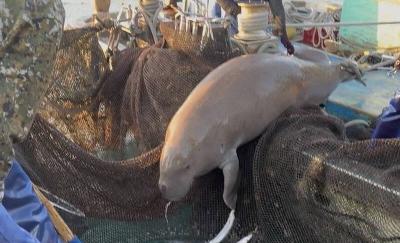The way the government runs state-owned media reveals its failure to understand that the media is not a political tool to sway public opinion, but a means to promote the interests of the public, critics said yesterday.
On Thursday, thousands of people took to the streets in Taipei to protest against a draft motion by Chinese Nationalist Party (KMT) Legislator Lin Yi-shih (林益世) that would empower the government to screen Public Television Service's (PTS) news coverage and programming.
Lin's motion requires the public broadcaster to obtain an item-by-item approval from the Government Information Office (GIO) for its budget expenditure and an expansion of its board seats.
If the proposal were passed, the government would also be empowered to exercise censorship and oversight over the programming policy and daily operation of Taiwan Indigenous Television Service, Taiwan Hakka Television, and Taiwan Macroview Television.
Although GIO Minister Su Jin-pin (蘇俊賓) said on Thursday he was still in talks with Lin and “there is still room for negotiation [on the motion],” the government appears to be watching idly while the KMT caucus attempts to interfere with PTS.
For one, the KMT-dominated legislature has frozen half of PTS' budget of NT$900 million (US$27.42 million) in the past year, media observers said.
PTS' plight was not the first case to arouse activists' concern over curbs on freedom of speech and media independence under the KMT administration.
“In the eyes of the KMT, the media is an important tool for winning elections. This is the biggest problem,” said Chuang Feng-chia (莊豐嘉), head of the Association of Taiwan Journalists.
The veteran journalist said that “the KMT did not fully realize this eight years ago as it had never lost power before.”
However, “after realizing it can influence elections through media manipulation, it sought to control the media and annihilate new agencies it deemed unfriendly,” Chuang said.
Chuang said such a mindset explains why Lo Chih-chiang (羅智強), a spokesman for KMT presidential candidate Ma Ying-jeou (馬英九) during the presidential campaign earlier last year, was appointed deputy president of the state-owned Central News Agency (CNA), and Wang Tan-ping (汪誕平), head of the KMT's policy research department, was named director of the state-owned Radio Taiwan International (RTI).
The KMT also nominated four legislators to new positions on the review committee in charge of selecting PTS board member candidates.
Placing members of Ma's team in the state-owned media was tantamount to putting up a screening mechanism at these media outlets to ensure cooperation with the KMT administration, Chuang said.
Reports have emerged of infringement on media freedom at CNA and RTI — some reporters could not get their reports published or aired, others were told to write down reports about the Democratic Progressive Party (DPP) or to downplay unflattering news about the government, and a number were transferred to other beats at the request of officials.
None of these developments were publicized for reasons that could include fear of losing one's job, Chuang said, adding that no one can compel the persons concerned to come forward to defend media freedom and run the risk of losing their salary.
Another concern about political intervention in media is the practice of embedded marketing, in which the government pays media outlets in exchange for media coverage.
During the presidential campaign, Ma had vowed to forsake this practice — which was also widely used by the former DPP government — when he met media reform groups.
Media Watch chairman Kuang Chung-shiang (管中祥), an assistant professor of communication at National Chung Cheng University, said that Ma had “broken his campaign pledge.”
The KMT government not only co-hosts forums on various issues with the media, which would then run a report on the meetings, as the DPP had done in the past, but it has extended the practice of embedded marketing through interviews with government officials, Kuang said.
Premier Liu Chao-shiuan's (劉兆玄) interviews in the Chinese-language newspapers United Daily News, the China Times and the Commercial Times in November were the products of this practice, so were many other interviews with officials published afterwards, he said.
Lin Lih-yun (林麗雲), an associate professor of journalism at National Taiwan University, said the main purpose of embedded marketing was to make the media less critical of the government.
The acceptance of embedded marketing can only deal a harsh blow to the reputation of the media, Kuang said.
“Who will believe the media if the audience knew that they are getting paid to publish the news?” he asked.

‘DENIAL DEFENSE’: The US would increase its military presence with uncrewed ships, and submarines, while boosting defense in the Indo-Pacific, a Pete Hegseth memo said The US is reorienting its military strategy to focus primarily on deterring a potential Chinese invasion of Taiwan, a memo signed by US Secretary of Defense Pete Hegseth showed. The memo also called on Taiwan to increase its defense spending. The document, known as the “Interim National Defense Strategic Guidance,” was distributed this month and detailed the national defense plans of US President Donald Trump’s administration, an article in the Washington Post said on Saturday. It outlines how the US can prepare for a potential war with China and defend itself from threats in the “near abroad,” including Greenland and the Panama

A wild live dugong was found in Taiwan for the first time in 88 years, after it was accidentally caught by a fisher’s net on Tuesday in Yilan County’s Fenniaolin (粉鳥林). This is the first sighting of the species in Taiwan since 1937, having already been considered “extinct” in the country and considered as “vulnerable” by the International Union for Conservation of Nature. A fisher surnamed Chen (陳) went to Fenniaolin to collect the fish in his netting, but instead caught a 3m long, 500kg dugong. The fisher released the animal back into the wild, not realizing it was an endangered species at

The Chinese Nationalist Party (KMT) is maintaining close ties with Beijing, the Democratic Progressive Party (DPP) said yesterday, hours after a new round of Chinese military drills in the Taiwan Strait began. Political parties in a democracy have a responsibility to be loyal to the nation and defend its sovereignty, DPP spokesman Justin Wu (吳崢) told a news conference in Taipei. His comments came hours after Beijing announced via Chinese state media that the Chinese People’s Liberation Army’s Eastern Theater Command was holding large-scale drills simulating a multi-pronged attack on Taiwan. Contrary to the KMT’s claims that it is staunchly anti-communist, KMT Deputy

The High Prosecutors’ Office yesterday withdrew an appeal against the acquittal of a former bank manager 22 years after his death, marking Taiwan’s first instance of prosecutors rendering posthumous justice to a wrongfully convicted defendant. Chu Ching-en (諸慶恩) — formerly a manager at the Taipei branch of BNP Paribas — was in 1999 accused by Weng Mao-chung (翁茂鍾), then-president of Chia Her Industrial Co, of forging a request for a fixed deposit of US$10 million by I-Hwa Industrial Co, a subsidiary of Chia Her, which was used as collateral. Chu was ruled not guilty in the first trial, but was found guilty